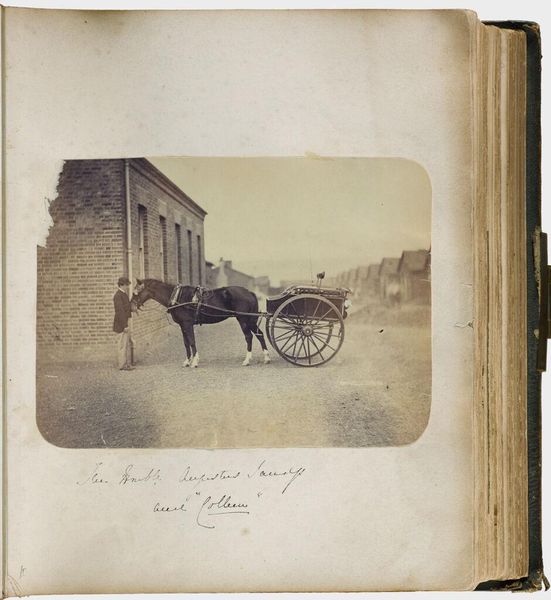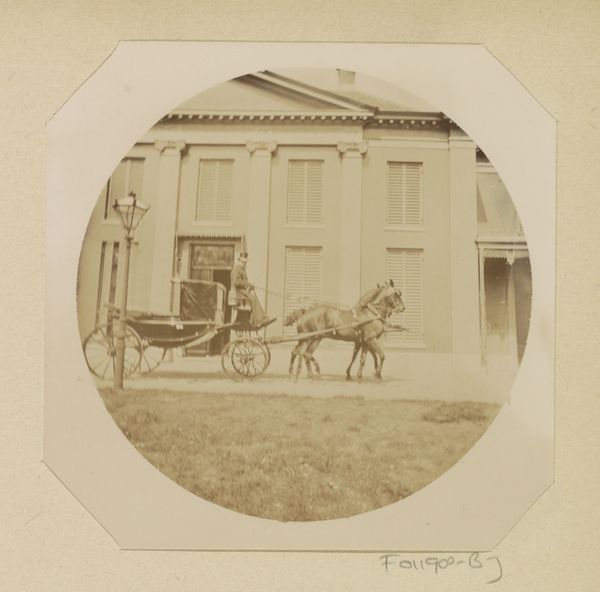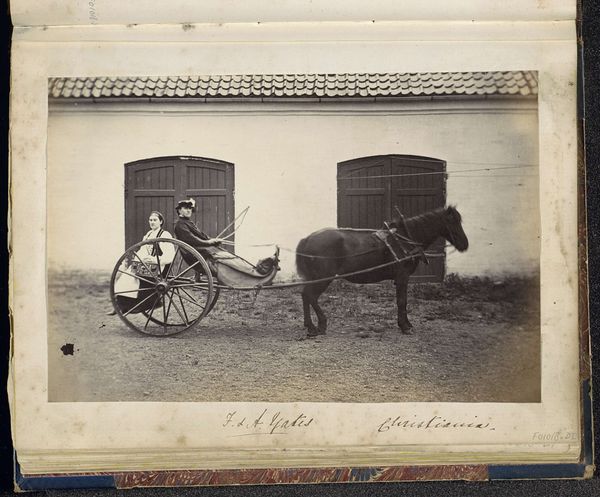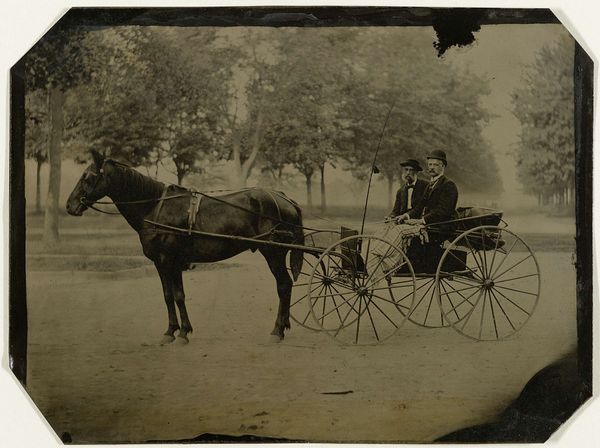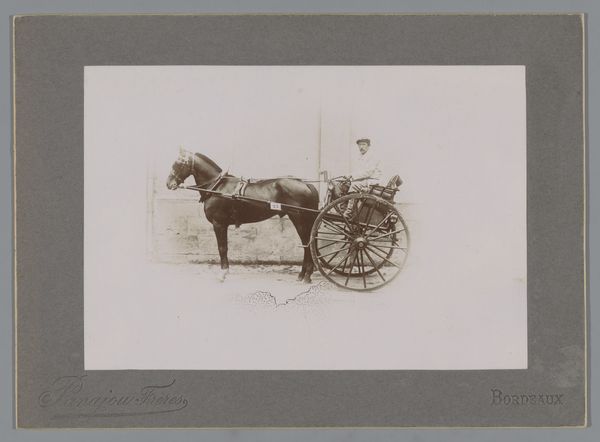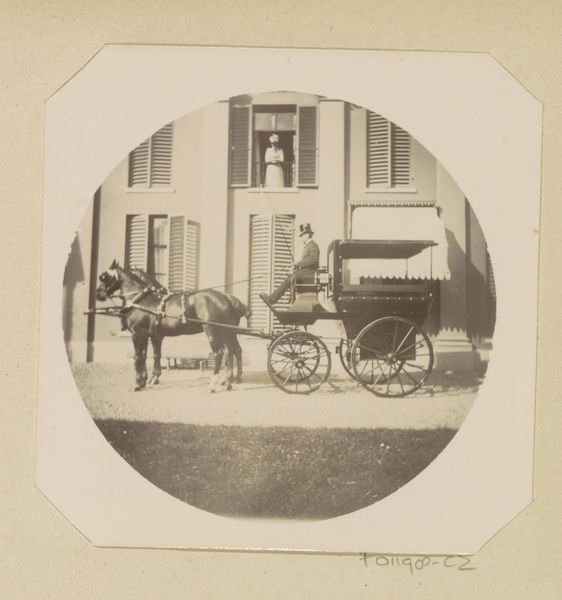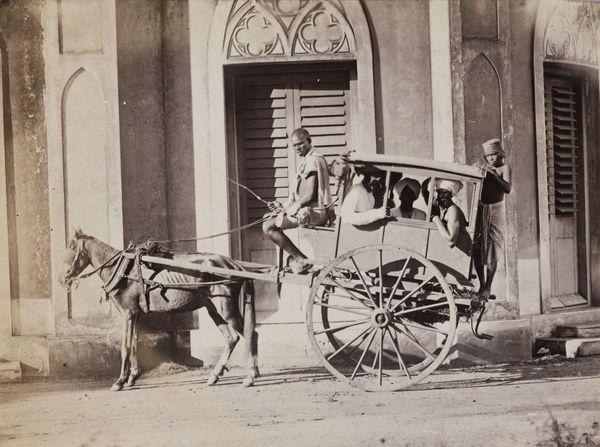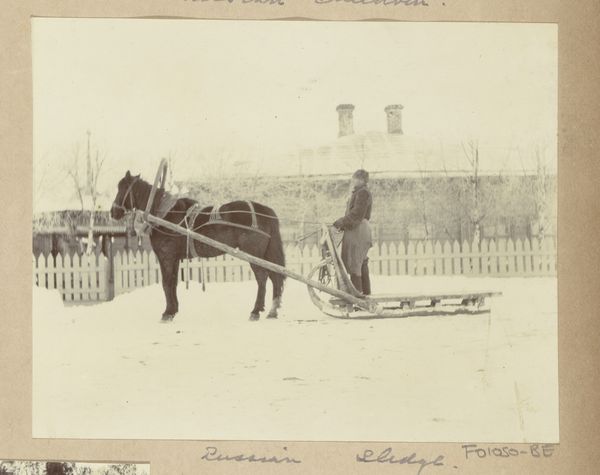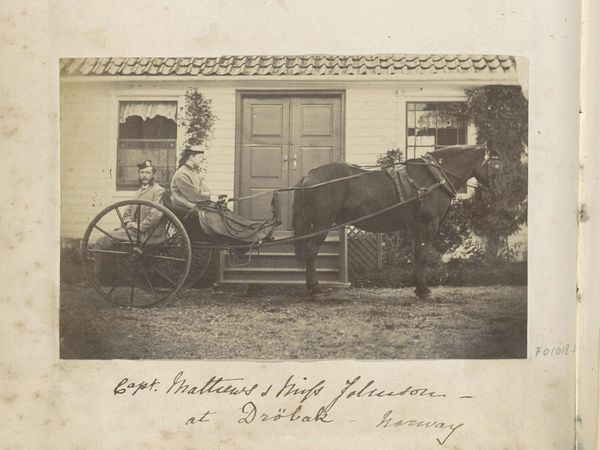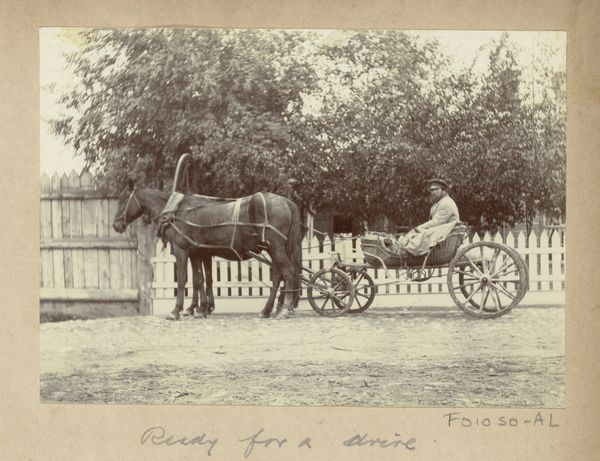
Dimensions: height 144 mm, width 200 mm
Copyright: Rijks Museum: Open Domain
Curator: What a striking portrait. R.B. Yates in a Carriage in Christiania, a gelatin-silver print taken sometime between 1860 and 1870. The photograph's muted tones evoke a certain pensive mood. Editor: Yes, there's a quietness to it. My eye is immediately drawn to the contrast between the horse, sturdy and earthbound, and the architectural backdrop—the arches loom almost dreamlike in the soft focus. Curator: I find the photographic process fascinating here. These early printing methods were transformative, placing portraiture into the hands of more than just the wealthy elite. Here we have, presumably, R.B. Yates immortalized not by paint, but by light and chemistry. A fascinating democratizing effect. Editor: Indeed. And think about the image of the carriage itself; its open frame, allowing a constant and immediate transition to nature's open road! Consider the wheels and how they have operated as powerful symbols of both progress and unstoppable cycles. It also brings a temporal element of cyclical passage to mind. Curator: I see that too. And it is important to consider the social backdrop here; Christiania, as Oslo was known then, experienced significant urban development at the time. So images like this would play an important role in constructing and broadcasting ideas about Norwegian progress and identity. The role of photography at the time, if you will. Editor: Precisely. I would argue that while it may subtly echo a narrative of advancement, the somewhat softened details imbue the scene with a delicate, nostalgic quality. The image feels caught between eras, a symbol of where they had arrived, or where the people wanted to project. The light! It does everything to instill in us a longing and pensive vision. Curator: True. These visual artifacts shape our collective understanding of the 19th century, each print carefully curated and interpreted. It makes you wonder, doesn’t it? Who was R.B. Yates, and how did they want to be remembered? Editor: And with that, how should we remember R.B. Yates? I suppose he found his immortality not on canvas but on paper; in our era, his moment is once again having its moment in the sunlight.
Comments
No comments
Be the first to comment and join the conversation on the ultimate creative platform.
